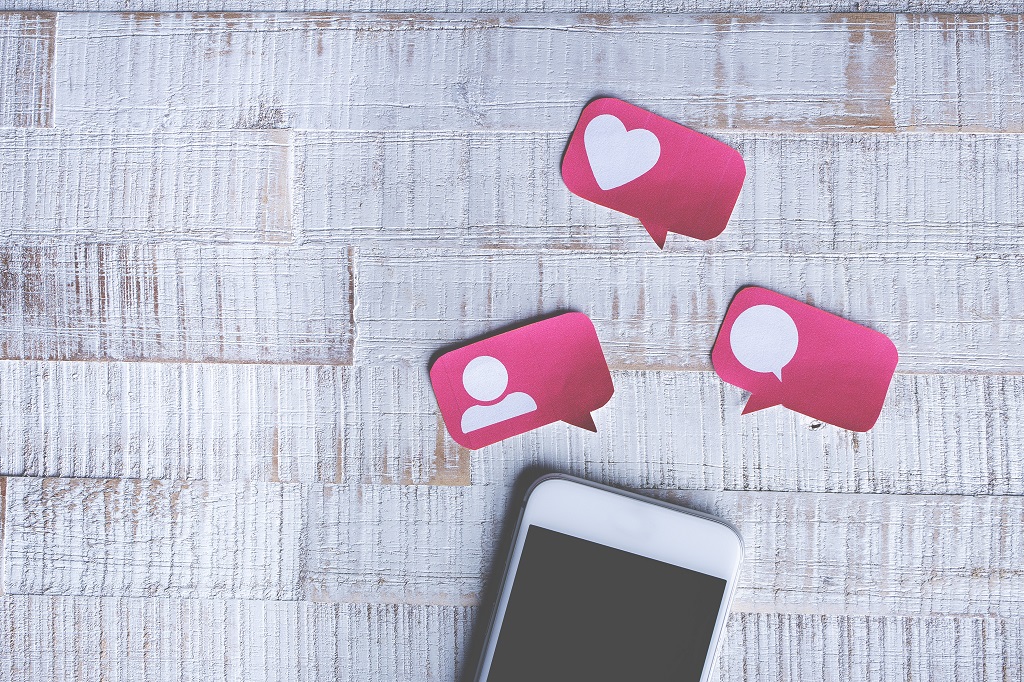There are currently 4.6 billion social media users in the world and that number just keeps rising. That means over half of the world’s population is on social media.
Given how diverse social media can be, this isn’t so surprising. Social Media has tons of benefits. It provides people with a way of connecting, it allows your Gran a way to see what her long-distance grandkids are up to, store your favorite travel memories or see that another one of your ex-school friends is getting engaged and married. Sigh.
Social isn’t just for personal use, though. Businesses can use social to increase sales, build brand awareness, and form loyal customer relationships with customers. Yeah, I’m sure you’ve heard all of this before, as well as tips on how to set a social media budget, whether or not to use a social media agency, or what social media tools you need to help smash your targets.
But today, we’re going to talk about a different, more professional side of social media. This brings us nicely to today’s question:
“Dear Katherine,
I’ll be honest with you, social media is something that I’ve been on but never really used. I knew the business benefits of social – but never thought it would be something I used for my own career.
However, my coworkers are always talking about a post they’ve seen from one of their followers or something they’ve share themselves that’s had a ton of likes and I just feel like I missed the shift to professional social platforms.
I’m now left feeling out of the loop. I want to get started and build a profile for myself but I’m not sure where or how to get started.
Please help me!”
Jane
Jane, you’re completely right. There seems to be a giant shift in using social media professionally.
It’s become an unwritten part of job descriptions to build a profile showing the commercial version of yourself. But this isn’t necessarily a bad thing, professional social media accounts can show your work value and act as an interactive portfolio.
So let’s explore professional social media further.
The first step is to choose your platform. Each one will have its own unique benefits and drawbacks depending on the industry you’re in and what you are trying to achieve. So, let’s take a look at your top players.
Top Tip: One thing to keep in mind is that you don’t need to be on all social media platforms, that’s the same whether you’re a business or an individual. Just focus on the platforms that are going to serve you best. For example, there’s no real point in being on Instagram if you prefer just written content.

It just wouldn’t be right to start this post without discussing Linkedin first. A platform that is every recruiter’s biggest dream. This truly professional social media platform was built exclusively to network online.
And surely, it worked. LinkedIn is now home to over 830 million users worldwide. It gains two new members a second, making it one of the best places to find and connect to other professionals.
The benefits of LinkedIn
- LinkedIn can act as a virtual CV, allowing you to show off your experience and previous projects. Like with any CV, Linkedin allows you to add your skills, but as an added bonus, your connections can endorse your skills to almost give you a recommendation.
- If you want to be seen as a ‘thought-leader’ for your industry or profession, it is easy to share or write articles, posting your own take and opinion.
- It’s also perfectly acceptable to share your own achievements without having to hide them behind a wall of modesty. If you’ve done something you’re proud of, share it here.
- For marketers, it’s a great way of seeing what Ads and Marketing ideas people are really open to and enjoy. You’ll often see your connections share their opinions on the latest burger king advertising phenomenon or the latest stunt between the supermarkets.
- It also boasts an incredibly strong job section, perfect if you’re wanting to branch off or test the waters.
The downsides
- The LinkedIn algorithm needs work. It tries to show you the most relevant things, which means it often gets stuck showing you updates from weeks ago. So If you want to keep up with current news, Linkedin probably isn’t the right place to do so.
- Some people use it as a platform to professionally show off, rather than provide any value to people. It’s alright to be proud of your work, but no one wants to see someone constantly talking about how great they are.
- Linkedin is widely becoming used as a sales tool and I get it, you’re able to quickly drop people a message directly to the person in charge rather than hoping you’ve got the right email and person you need to speak to. But what it means is that you often have a ton of spammy messages sitting in your inbox.
Top Tip: LinkedIn is often only used when people need a new job. But it’s best practice to use it year-round, not just when you want to see what else is out there. Use it to showcase yourself and connect with others. Linkedin is a great place for recruiters and if you have a strong profile, job opportunities will be right around the corner. Hey, you may even get headhunted, saving you the hard work.

Twitter is emerging as a hot favorite for professionals. In just 3 years the platform has grown by around 39 million users.
The reason it’s a favorite is that it’s built around what’s happening right now. Small, little updates make Twitter a timeline of relevant news and conversations that are happening right now. John Cook, Co-Founder, and Reporter at GeekWire, says that:
“Twitter is a key part of my journalistic process. It allows me to find and interact directly with potential sources and keeps me abreast of breaking stories. It also helps me compile news. l use my Twitter updates as journalistic notes which gives me a reference when I go to write a full story.”
But Twitter isn’t just about news, It’s also a great way to build or join a community by reaching out to others or even taking part in online events.
Weekly chats are a good example of this, like #PPCChat, hosted by Julie F Bacchini on a Tuesday at 12 PM EST. Each week a set of questions are asked giving people the opportunity to respond with their opinion or experience. It not only provides you with a way to connect to other like-minded individuals but can also be very educational.
The benefits of Twitter
- Twitter provides real-time updates about stories that are happening right now from the new series of love island to the latest IOS update.
- You can jump into relevant conversations that are interesting to you, showing your expertise naturally by helping others or showing an opinion
- You can directly talk to influencers, customers, or people in your industry. You don’t need to have them follow you, just @ them and see what happens.
- Use #Hashtags to find and jump into relevant topics. It’s easy to get involved.
The downsides
- Twitter moves fast. Sometimes content could be easily lost, meaning you might not get as much engagement as you might have hoped.
- Due to the fast-paced nature of Twitter, if you really want to build your following and engagement, you also need to post more to keep it active. It’s suggested to post anywhere between about 3-30 times a day. Providing you have the content to do so.
Top tip: Don’t be afraid of the 280-character limit. If you’ve got something to say, start a thread. These are great ways to get attention and get your point across – without trying to ram it into a single tweet.
TikTok
Created in 2016 TikTok is still a relatively new player in the world of social media however when we compare it to some of the other platforms it’s clear age doesn’t matter. With 1 Billion active users, TikTok is now the 6th most used social media platform in the world.
The video platform is mostly used to find funny and entertaining content, but it doesn’t exclude professionals.
More and more professionals are using TikTok to create short engaging and educational videos. This is especially beneficial for freelancers and digital nomads who are trying to show their expertise and gain new clients.
The benefits of TikTok
- As TikTok is still very much growing, there are a lot of opportunities to be discovered by your target audience.
- The current maximum time limit for a TikTok video is 3 minutes, but the optimal length is between 21-34 seconds meaning videos are short and snappy, you don’t have to worry about sitting down and filming an 8-10 minute video.
- The default page is the For You Page, meaning that unlike Facebook and Instagram you’re shown new content from people you aren’t already connected to mixed in with content from the people you do-follow.
- Let’s not forget that video marketing is a priority. Videos, build trust, boost conversions, and encourage shares.
The downsides
- TikTok favors consistency, if you’re trying to build your account you’ll want to make sure you have a constant flow of content to post. It’s recommended that while building up your account you post between 1-3 times a day. But be aware, that quality also matters.
- Once a video is posted to TikTok it brands it with a TikTok watermark, so if you wish to use this video on other platforms you need to save the original video or use a site to remove your watermark.
Top Tip: Using trending sounds can help your videos be seen by more people, even if your video doesn’t need an added sound it could be good to add it and turn down the volume. For example, you have a video where you’re giving 3 quick tips on Microsoft Ads, add a sound, and turn the volume to 1 or 2% that way you’ll still be able to hear yourself but also reap the other benefits.
Instagram is a photo-sharing social media platform, making it the best choice for those in visual or creative industries to show off their work and talent.
For example, if you’re a designer, upholster, or photographer, this is the platform for you. Share pictures of your work and build a visual portfolio of your talent.
As well as photo sharing, Instagram offers numerous other ways to share content, similar to TikTok, Instagram offers Reels for short, snappy videos.
Prefer to create longer-form videos like behind-the-scenes or tutorials? No problem, you’ll want to check out IGTV.
Not to forget, as of 2020 Instagram now also offers guides, a cross between image carousels, and a blog post.
The benefits of Instagram
- Find people and inspiration through #hashtags – while getting more exposure to your own work.
- If you have temporary posts that you don’t want to live on your feed you can use stories. Stories also allow you to ask questions or create polls and help promote engagement with your audience.
- Use story highlights to create categories on your profile to save old content and quickly show visitors what you can offer.
- There are so many different ways to share content, keeping your profile fresh and your audience engaged.
The downsides
- You can’t post links on your pictures. You can link people through your stories or through your bio if needed.
- You can post comments and reply to other people’s posts, but it’s not the best for having conversations with others or taking part in group discussions.
Top tip: It’s best to think about a professional Instagram as a personal brand, you want to find a visual style that works for you, where possible try to stick to this style, whether it’s a certain preset or border. Your profile should look pleasing as a whole. Canva can be a great tool to help you create images and save your colors and fonts.
Now you may wonder why I left Facebook until last, surely one glance at this graph should show why making a professional Facebook account is worth it…
And it’s a good point, The sheer amount of users and activity that Facebook offers is like no other.
However, Facebook for many is viewed as a personal platform, the algorithm itself will favor posts from friends and family over pages you follow, however, that isn’t to say Facebook can’t be used by professionals.
If you want to use Facebook for professional use, it may be worth creating a separate account, purely for that purpose.
Alternatively, you can make use of groups to network and build a name for yourself. Groups are becoming really popular, even businesses are using groups to create an active community. It also means you don’t have to post work-related things to your friends or have to build out your friend list with professionals. Even us at Adzooma have a digital marketing group that you can join here.
The benefits of Facebook
- Millions of active users, making it a great place to find and connect with other professionals.
- Groups and pages make it easy to find and join communities
- The algorithm is much better than LinkedIn’s, helping you see relevant and recent updates first.
The downsides
- Is still largely a personal platform and people might not respond kindly to friend requests.
Top tip: Make the choice early on how you’re going to use Facebook. If you want to keep your personal account personal, stick to groups and pages. If you want to connect with others, create a new, professional account or business page first. It will save you a lot of time and hassle later on.
Other social media platforms you may want to consider
Some honorable mentions:
Pinterest is the only social media platform to offer a visual search. So, if you’re in the visual industry, you might want to get on board with Pinterest.
95% of Pinterest users say that the social media platform inspires them, and 91% say it helps them achieve their goals. Those are powerful motivators that you want to get behind. Rather than a ‘thought-leader’, you can become a professional source of inspiration on Pinterest by creating boards and pin images that will inspire your network or customers.
Unlike other websites, Reddit forbids marketing – which means it’s often overlooked as a way to build your professional profile. But Reddit does provide unique opportunities to help people solve problems and contribute their expertise to help others learn.
There are often subreddits for certain industries or topics that you can get involved in or questions you can help users answer. You can even start a ‘Ask Me Anything (AMA)’ subreddit, where you encourage people to ask you questions.
YouTube
YouTube is filled with influencers and experts teaching their top tips and sharing their knowledge through engaging videos. Just like Google Ads Specialist Odolena Kostova. She posts updates to her YouTube channel about all things Google Ads and has been sharing some of her best tips with us as a guest blogger.
YouTube can be a tough one to tackle, unless you already have the following or you can keep up the consistency of posting, you may decide to look to one of the other channels.
Showcase, network & socialize
Fundamentally, building a successful professional profile online is about three core things:
- Showcasing who you are and you’re expertise
- Networking with your peers
- Socializing with your followers or connections to build trust and credibility.
The exact platform you’re using depends on what you’re looking for and the industry. But, no matter what social network you’re using: be honest and be yourself. At least, to a certain degree.
You’re trying to build a professional version of yourself, not someone else. Don’t be afraid to give your actual opinions and put your own stamp on how you network online, rather than try to copy others.
All that’s left is to choose your platform, sign up and get talking.
All the best,
Katherine.




